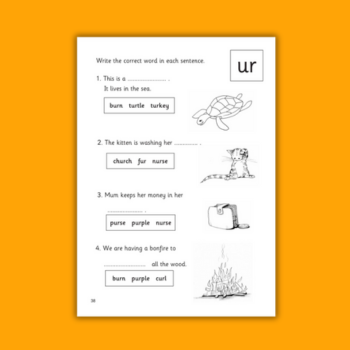Including ‘ur’ words in the KS1 national curriculum is a vital aspect of early literacy teaching.
The ‘ur’ sound, found in words like ‘turn’, ‘burn’, and ‘hurt’ represents a key phoneme that our pupils need to master. This specific sound pattern is not only common in the English language but also crucial for developing strong decoding and spelling skills.
When we teach ‘ur’ words, we enhance our pupils’ phonemic awareness – the ability to hear, identify, and manipulate sounds. This foundational skill is essential for reading fluency. By incorporating these words into our phonics lessons, we provide children with the practice they need to recognise and reproduce these sounds, which helps them to decode new words and improve their reading proficiency.
Furthermore, ‘ur’ words are integral to everyday language. Early familiarity with these words expands our pupils’ vocabularies and improves their comprehension. When children can recognise and use common ‘ur’ words, they communicate more effectively and confidently, both in spoken and written forms. This proficiency is a stepping stone to more complex literacy skills.
Incorporating ‘ur’ words aligns with our curriculum’s objectives to ensure all pupils achieve basic literacy by the end of KS1. Systematically teaching various phonetic patterns, including ‘ur’, enables us to provide a balanced and thorough literacy education. By doing so, we equip children with the necessary tools for future academic success and lifelong learning, far beyond the primary classroom.
Download this free worksheet PDF that provides examples of ‘ur’ word sentences, and opportunities for children to practise their vocabulary.
Jelly and Bean’s reading scheme follows the phonic progression of Letters and Sounds, including the introduction of the first 100 high-frequency words, also followed by the next 200 words. Download more of its resources on its website at jellyandbean.co.uk














